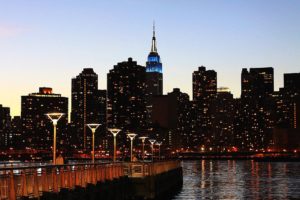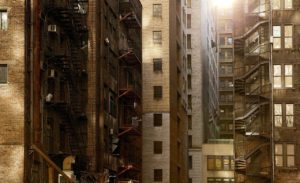Environmental Sustainability Puts Green Building Back in the Black
Green Buildings Are Back in Black
 With the environment and climate change so much in the news these days, we might take it for granted that business owners, building managers, and facility managers have environmental issues at the top of their priority lists. And the evidence indicates that indeed this is true to a large extent.
With the environment and climate change so much in the news these days, we might take it for granted that business owners, building managers, and facility managers have environmental issues at the top of their priority lists. And the evidence indicates that indeed this is true to a large extent.
Newer Buildings Have Improved Energy Efficiency
Data from the 2012 Commercial Buildings Energy Consumption Survey (CBECS) shows that total U.S. commercial floorspace increased by 22% from 2003 to 2012. Energy consumption during the same time frame increased by only 7%. That difference shows the increased energy efficiency of newer buildings, and the willingness of owners and managers to embrace ways to make commercial buildings greener.
Half of All Commercial Buildings Are More Than 35 Years Old
However, further analysis of the CBECS reveals the other side of the green coin. Only about 14% of total U.S. commercial floorspace is less than 10 years old. Of all commercial buildings, some 5.6 million in total, about half are more than 35 years old.
This shows there are good reasons why some buildings lag behind in energy efficiency and other measures of green building standards. Older buildings remain a challenge in spite of the widespread adoption of facilities management best practices and an emphasis on improved procedural standards for many facility and building managers.
Older Buildings Are Turning Green
It’s a critical factor in our environmental well-being because of the sheer scale of the combined building class. Those 5.6 million buildings contain a total square footage of 87.4 billion feet of commercial floorspace. Any small improvements that affect the entire industry will have a substantial overall impact.
For example, since 2003, energy consumed by lighting for commercial buildings has dropped by 46%, because of conservation management policies and the ongoing switch from incandescent lighting to LED bulbs and compact fluorescents. Space heating energy consumption over the same period is down by 26%.
In some cases, short-term budget constraints or lack of a comprehensive building management strategy can work against the amount of green innovation a building may have put into action. But the numbers motivating green improvements get more compelling all the time.
The Dollar Value of Energy Efficiency and Healthy Buildings
 The U.S. Green Building Council identifies a major trend in a recent report, The Business Case For Green Building. “Commercial building owners and managers will invest an estimated $960 billion globally between now and 2023 on greening their existing built infrastructure. Major priority areas include more energy-efficient heating, ventilation and air conditioning, windows, lighting, plumbing fixtures, and other key technologies.”
The U.S. Green Building Council identifies a major trend in a recent report, The Business Case For Green Building. “Commercial building owners and managers will invest an estimated $960 billion globally between now and 2023 on greening their existing built infrastructure. Major priority areas include more energy-efficient heating, ventilation and air conditioning, windows, lighting, plumbing fixtures, and other key technologies.”
That trillion dollar investment represents a huge step in overall environmental harm reduction. It also adds asset value to the green retrofitted buildings and reduces annual operating costs by an average of 10%. LEED (Leadership in Energy and Environmental Design) certified building retrofits perform even better, averaging 20% annual maintenance cost reductions.
Comprehensive Facility Management for a Greener Future
Newer buildings typically have integrated technology and automated systems to optimize building performance and economy. Older buildings require a more proactive stance and strategic approach. But every step, large and small, can have a positive impact, from simple upgrades like the greening of janitorial and maintenance programs, to complex mechanical systems upgrades and retrofits.








